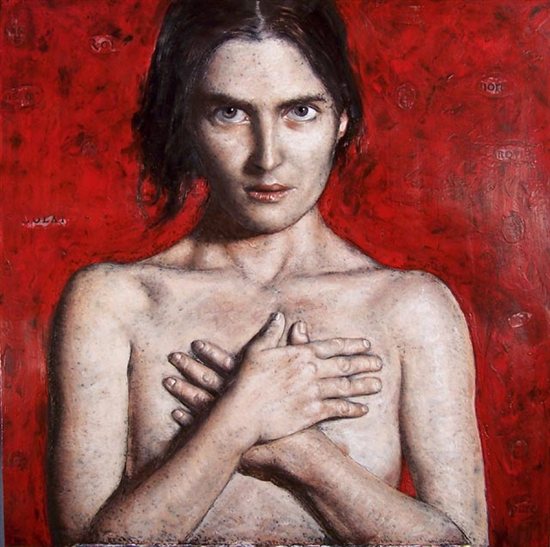Can You Outgrow Your Art?
 |
| Train Tracks by Valerio D'Ospina, 2011, oil on melamined MDF, 30 x 24. |
Some artists such as Jackson Pollock discover and use their
own visual language to communicate with the world, and this singular voice
takes them through an entire career of putting oil on canvas. Others—Picasso for
instance—pass through several stages of change in their work, whether by theme,
technique, or style.
Artist Valerio D'Ospina believes that his own artistic
growth is in direct correlation with how he grows as a human being. "My
personality, my character, and even my taste and style have been constantly
changing throughout my entire life. Inevitably, my artistic needs are involved
in this flow of changing," he says.
I identify with D'Ospina's point of view because I think—or
hope—that I am constantly growing as a person, gaining wisdom and new
abilities. And how can that not impact the art we make?
Just a few years ago, D'Ospina was a graduate student in
Florence using a more traditional-classical approach to oil painting. The oil
painting techniques that he used are for the indirect way of painting and
included priming his linen with rabbit skin glue and gesso, toning his surface
to a mid-tone value, making preparatory drawings and underpaintings, and using
layers and glazes.
 |
 |
||
| The artist's early work: F. Galano in His Studio by Valerio D'Ospina, oil on canvas. |
An early portrait: Ragazza con Tre Oecchini by Valerio D'Ospina, oil on canvas. |
||
The approach dates back to the Renaissance but D'Ospina
found that painting this way was driving him to photorealism because of its
emphasis on refining technique and virtuosity. He knew it was time for a change
when he realized that his first sketch of a painting rather than the end result
with successive layers and rendering brought him more satisfaction. "The first
sketch was faster, gestural, and more fresh. I thought it was a shame to cover
all that with the heaviness of the defining layers," he says.
For D'Ospina, realizing he wasn't satisfied with the way he
was working meant that he needed to disrupt the habits of his previous
comfortable techniques by trying different surfaces, materials, and, most of
all, by changing subject matter and experimenting with dramatically different
themes. He also started painting alla prima, applying paint straight on the
surface without using a pencil drawing sketch beforehand.
Now D'Ospina works on bringing a three-dimensional quality
to the surface of his oil paintings and a sketchy rendering aspect to his
compositions that still delivers a lot of meticulous detail. He also
transitioned from painting more academic subjects to industrial scenes. All of
this was uncomfortable for the artist at first, but it was exactly this
challenge that led him to embrace a more expressionistic attitude and gave him
the growth he needed to find continued satisfaction in his painting.
 |
 |
||
| Naval Field (study) by Valerio D'Ospina, 2010, oil on melamined MDF, 31 x 24. |
Via Roma by Valerio D'Ospina, 2011, oil on melamined MDF, 18 x 12. |
||
I'm incredibly inspired by D'Ospina's openness and his commitment
to change his painting approach from what he first learned to what felt right
to him as an artist. He was honest with himself about what he needed as an
artist, and went after it. And that is what we should all do more of! If you
want to explore the techniques that allowed D'Ospina to grow and refine his
work, it is a great idea to start with Michael Wilcox's book on Glazing and other Old Master techniques. Enjoy!

SOURCE: Artist Daily - Read entire story here.







